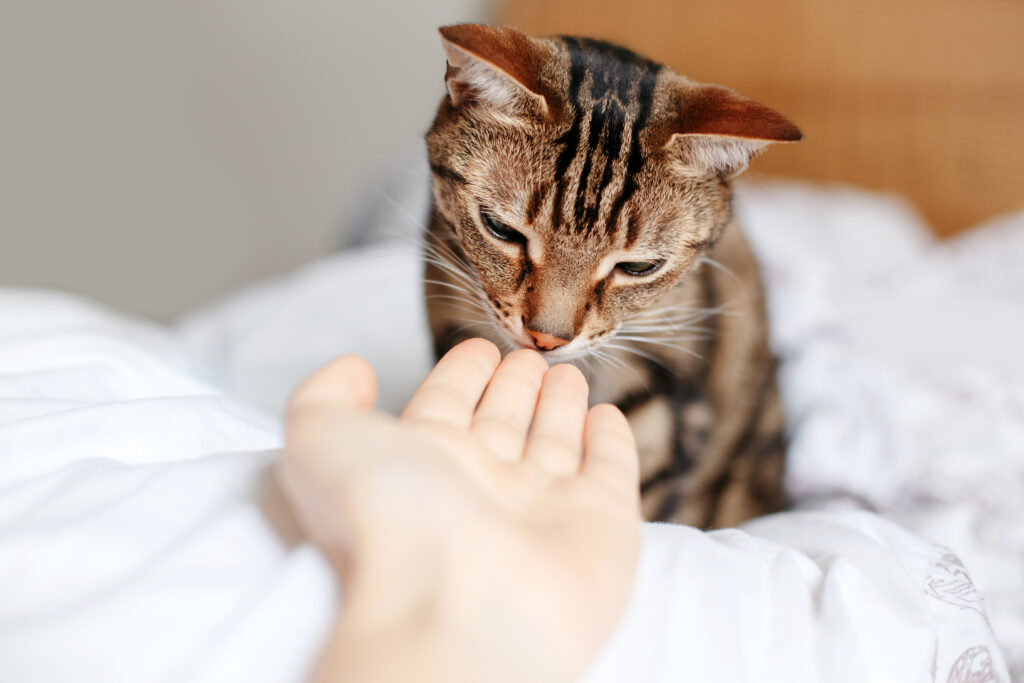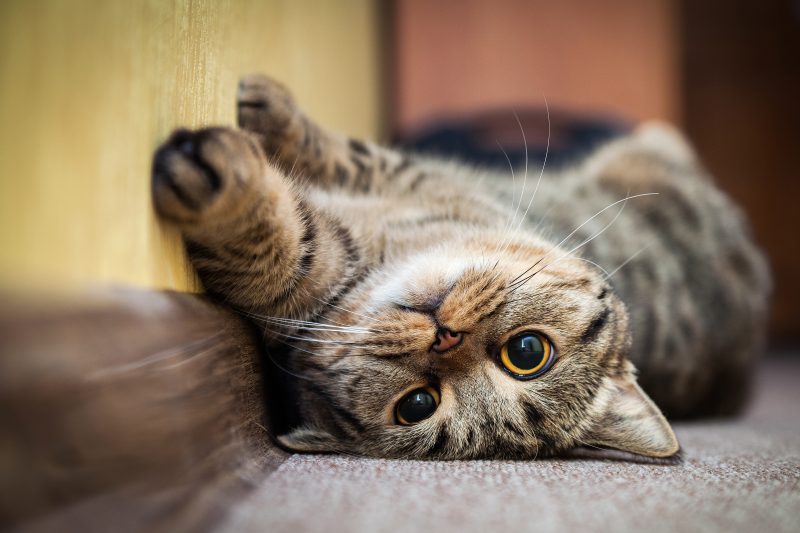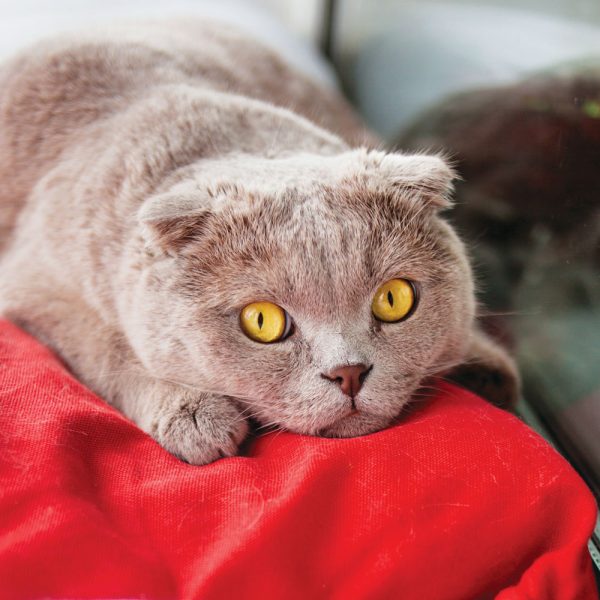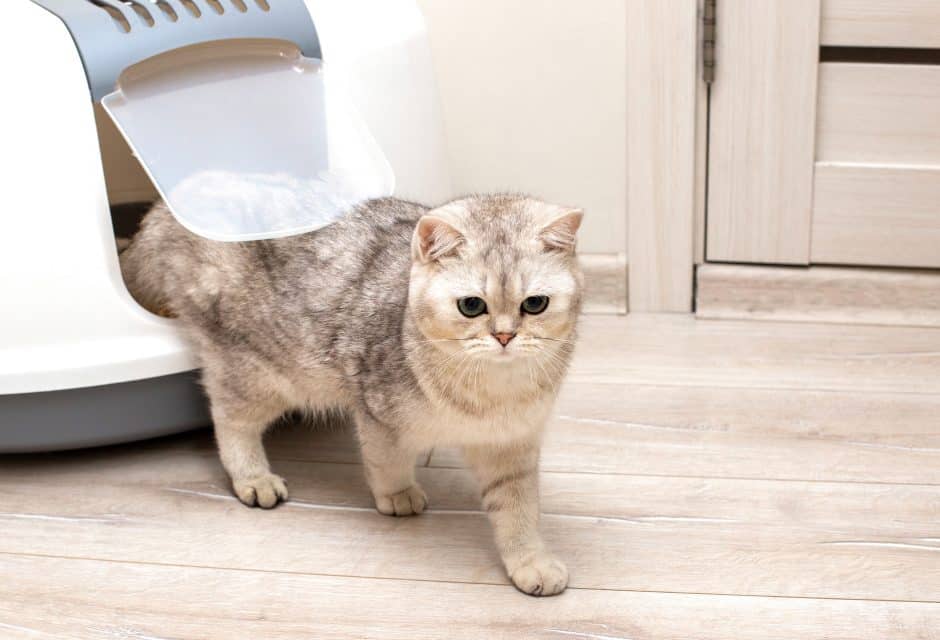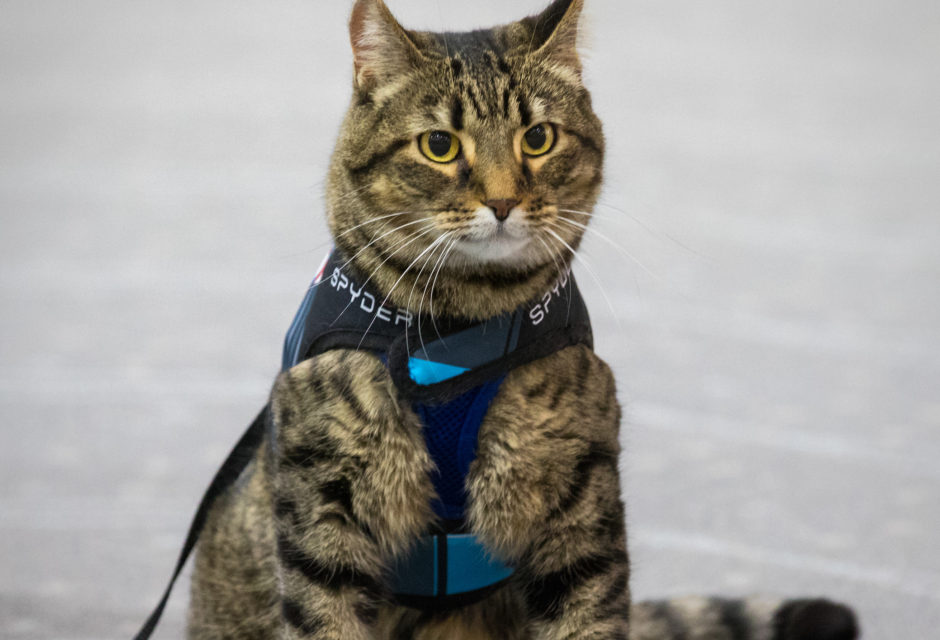
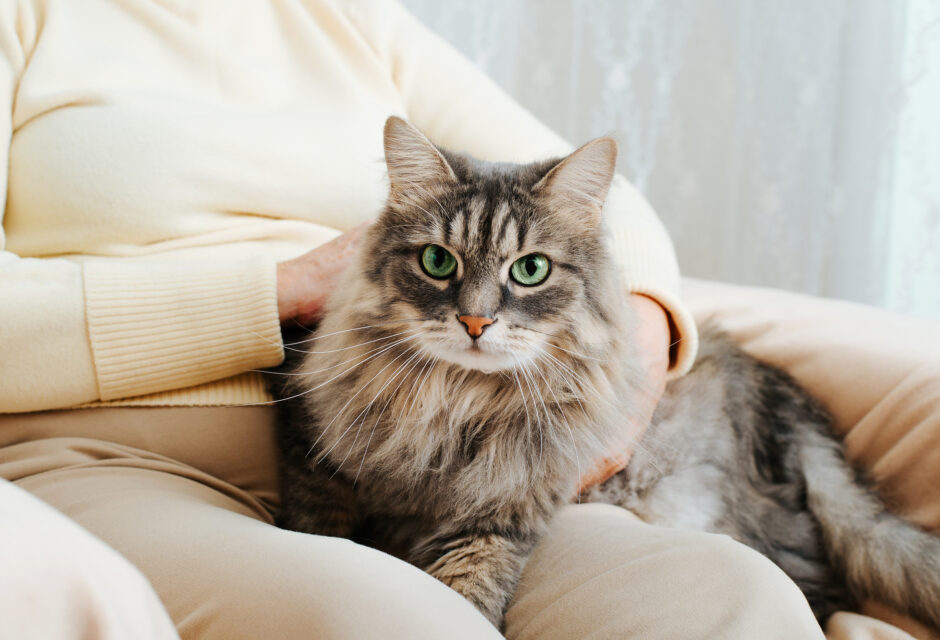
How to Greet a Cat
This is the best way to greet a cat
Cats appreciate a little personal space, but what is the best cat greeting? This is based on the fact that they’re territorial and need a little time to use their finely tuned senses to determine how close they can safely get.
We typically think of cats are predators but they’re also prey animals so they are continually making judgments about the safety of their immediate environment. This doesn’t mean they aren’t sociable animals though. Approaching a cat greeting the right way can make a huge difference in whether the cat feels comfortable enough to interact or whether she feels it’s best to keep her distance. Here’s the general technique.
How to Greet a Cat
#1 Start by Letting the Cat Set the Pace
Let the cat approach you. Always offer a choice. Let the cat know she has control of the situation and has the option to engage or evaluate at a distance. Don’t just walk up to a cat you don’t know. If a cat feels she has choices, she is less likely to feel the only option is to escape.
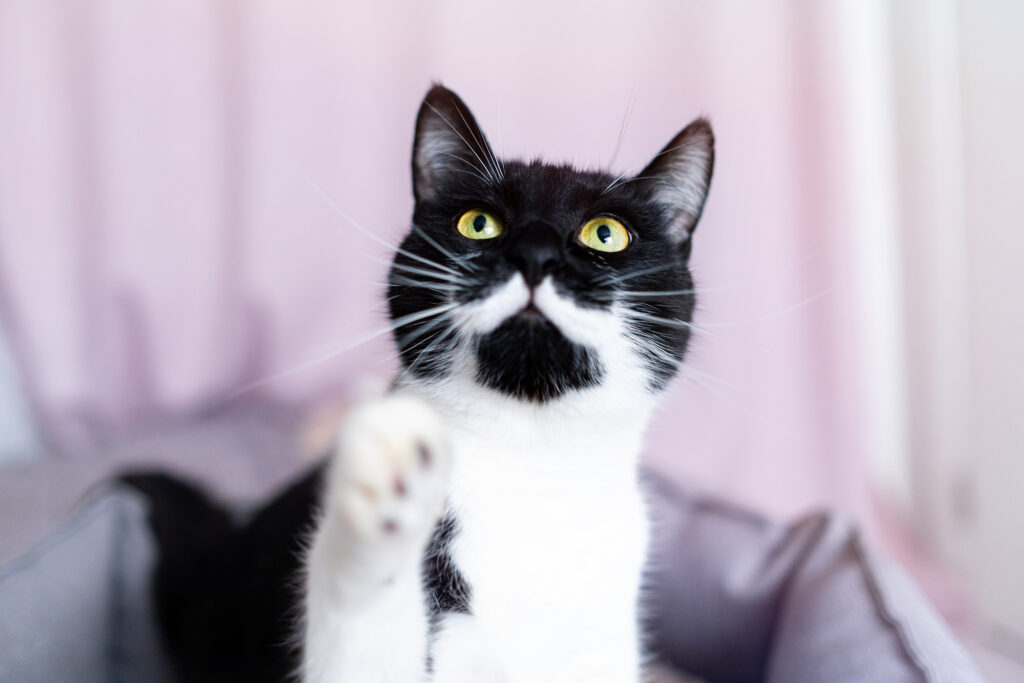
Photo: bigstock.com/Natalia Duryagina
#2 Use Soft Glances
In the animal world, a direct stare is considered a challenge so avoid looking directly at the cat. Use brief glances that are soft, to let her know you aren’t a threat. Learn how to read your cat’s expressions!
#3 Get Down on the Cat’s Level
You’ll appear much less imposing if you aren’t standing over the cat. Kneel down or sit on the ground. This may also make her feel more comfortable about approaching in order to do a scent investigation.
#4 Do the Cat Version of a Handshake
Since cats rely so heavily on scent, you can use that to “speak” her language. Simply extend your index finger and see if she ventures closer to do a little sniff. This is basically the same as the nose to nose sniffing two cats would do as an initial greeting. Don’t poke your finger at her or wiggle it around because you’re not trying to use it as a toy. It’s simply there to imitate a cat’s nose.
If the cat approaches and sniffs your finger, pay attention to what she does afterward because that will provide clues as to how to proceed. She may rub against your finger (that’s a friendly sign) or she may move in closer to rub against your arm (another friendly sign). This is likely a message that she’s comfortable enough with more contact. If she sniffs your finger and backs away or just stands still, it means she’s not sure yet so don’t make any more moves. She may come back for a second sniff or she may prefer to not engage any further. Learn more about how to read a cat’s body language.
#5 Cat Greetings: Patience Pays Off
If the cat decides no further contact is wanted, don’t view that as a failure. By being patient and giving her choice, you’ve helped establish initial trust. The next meeting may help her feel more comfortable and she might engage sooner. It’s worth the wait to win a cat’s trust.
#6 Always End on a Positive Note
If you’re able to pet the cat, don’t push her tolerance level, especially when she’s just learning to trust you. The same applies if she curls up in your lap or settles down next to you. If she decides she wants to move away, don’t grab her or try to entice her back. Again, it comes down to offering choice for the best cat greeting. If she knows she’s free to leave, she’ll feel more comfortable about getting closer next time.
Pam Johnson-Bennett is a certified cat behaviour consultant and best-selling author of eight books on cat behaviour. She starred in the Animal Planet series Psycho Kitty, seen in Canada and the UK. She was a vice president of the International Association of Animal Behaviour Consultants and founded their cat division. She has served on an advisory board for the American Humane Association as well as other animal welfare organizations.
Pam is considered a pioneer in the field of cat behaviour consulting, having started her career in 1982. Some of her books have been used as textbooks for behaviour courses and she has influenced many practicing in the field today. Her book, Think Like a Cat, has been referred to as the cat bible.
Pam owns Cat Behaviour Associates, located in Tennessee. She lives with her husband, two children, a rescued cat, and a rescued dog.
Join the newsletter and never miss out on cat content again!
"*" indicates required fields
By clicking the arrow, you agree to our web Terms of Use and Privacy & Cookie Policy. Easy unsubscribe links are provided in every email.





